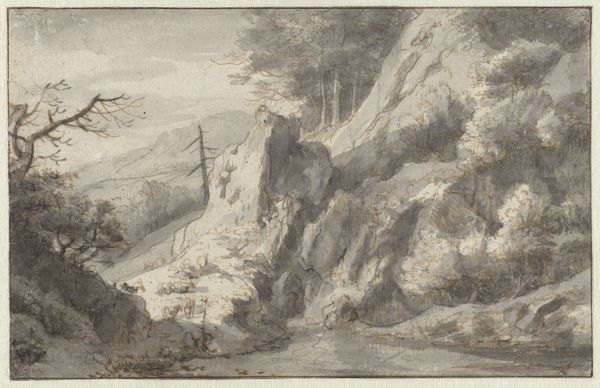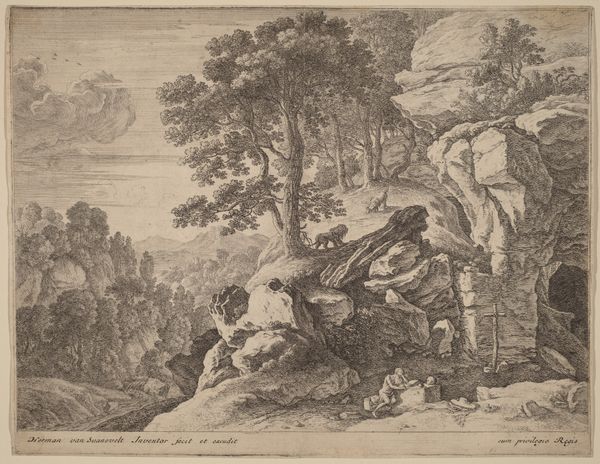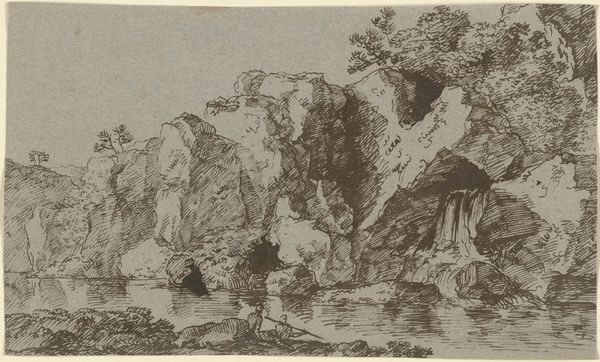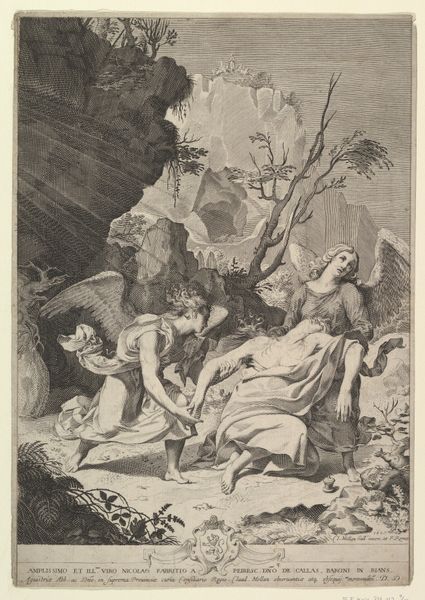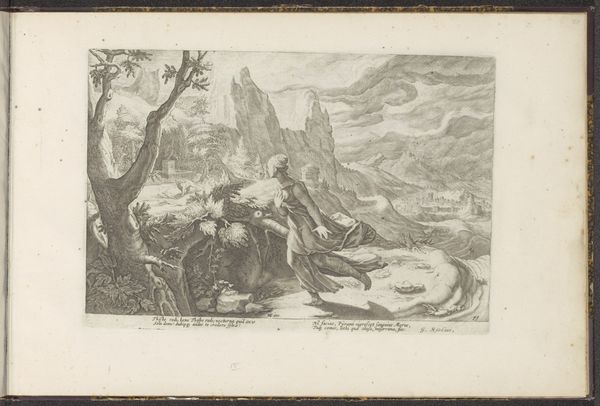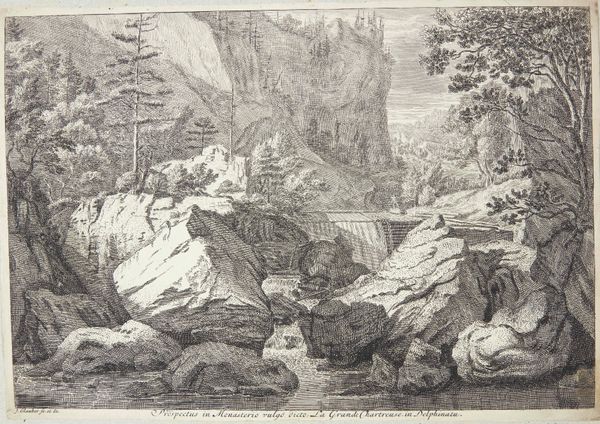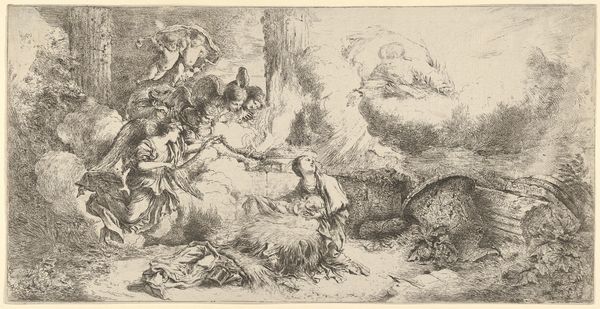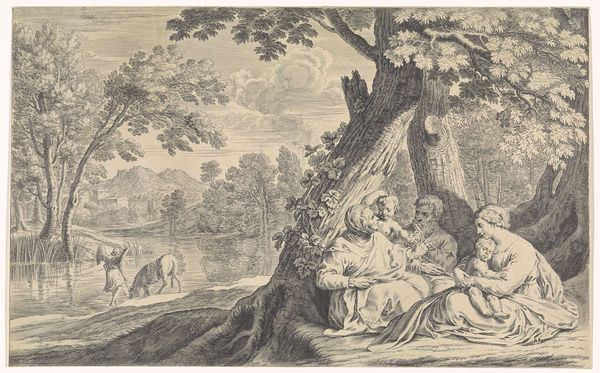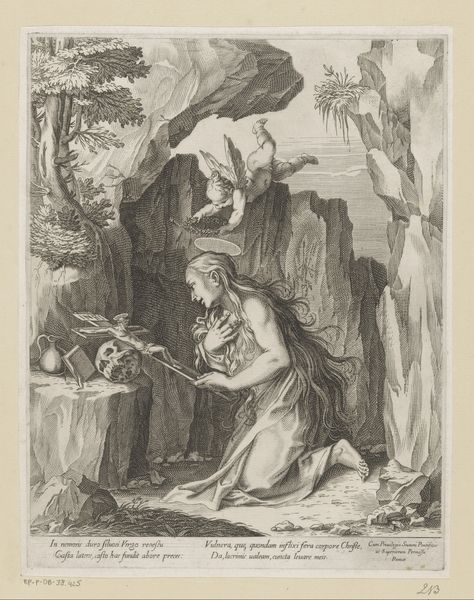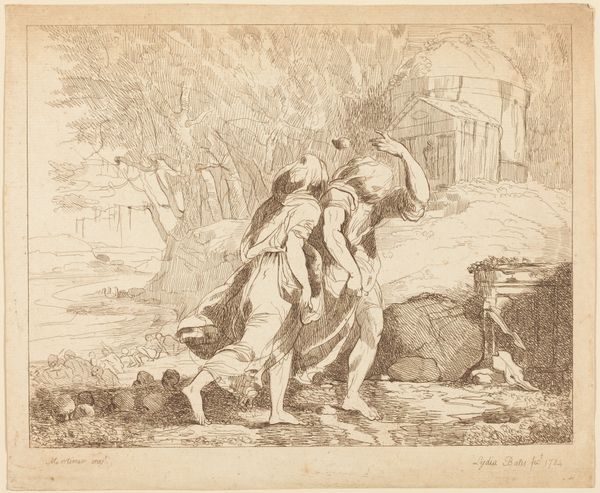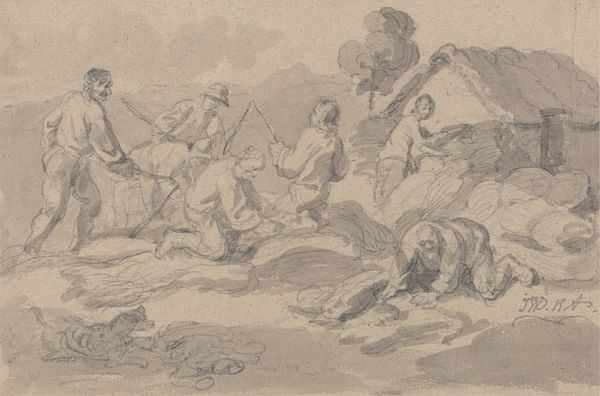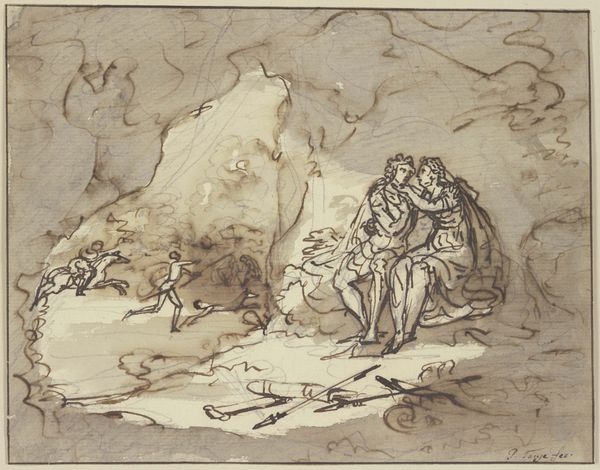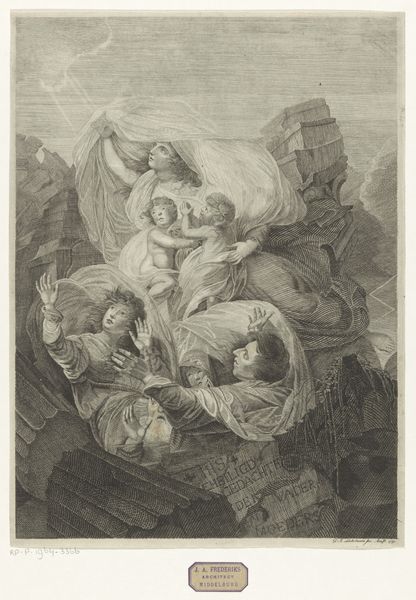
drawing, paper, ink
#
pencil drawn
#
drawing
#
baroque
#
animal
#
landscape
#
figuration
#
paper
#
ink
#
pencil drawing
Copyright: Public Domain
Editor: Here we have "Six Otters in a Rocky Grotto by the Water," a 1736 drawing in ink on paper by Johann Elias Ridinger, now hanging at the Städel Museum. It's quite intricate. I'm struck by the tonal contrasts, the darks of the cave against the almost clinical precision of the drawn lines defining the otters. What do you see in this piece? Curator: Let's consider the internal dynamics. The formal elements are highly controlled. The use of hatching and cross-hatching generates not only volume but also directional forces, guiding the eye across the composition. Observe the deliberate placement of the otters; their arrangement creates a visual rhythm, echoing the organic shapes of the surrounding rocks and foliage. Editor: I see what you mean. It’s not just a representation of otters; it's more about the interplay of line and form creating a sense of depth and movement, especially with the waterfall in the background. Is the baroque landscape merely a setting, or does it symbolize something else? Curator: Precisely. While the subject matter presents a specific scene, the formal composition supersedes simple representational concerns. The artist’s hand, so evident in the meticulous rendering of textures and surfaces, directs us to appreciate the aesthetic construction rather than solely interpreting narrative content. Ask yourself: How does the linear structure contribute to the overall unity of the artwork? Editor: So it's less about what the otters are *doing* and more about how they contribute to the overall design, their forms interwoven with the environment. This piece is such an interesting study in visual architecture. Thanks! Curator: Indeed. Paying close attention to formal relationships deepens one's comprehension of the artwork. It encourages you to perceive the conscious choices behind artistic production and elevate mere subject recognition toward real formal appreciation.
Comments
No comments
Be the first to comment and join the conversation on the ultimate creative platform.
